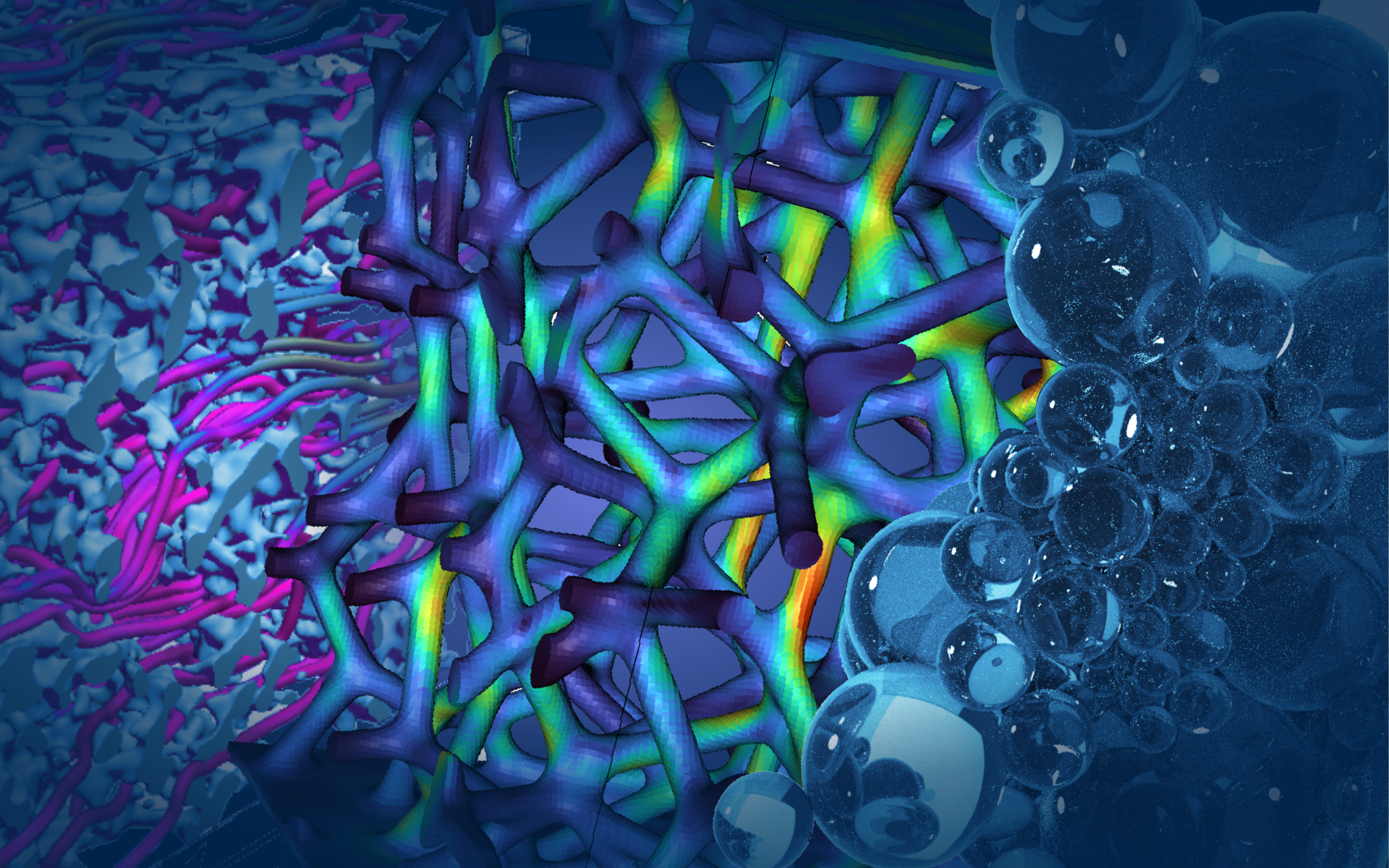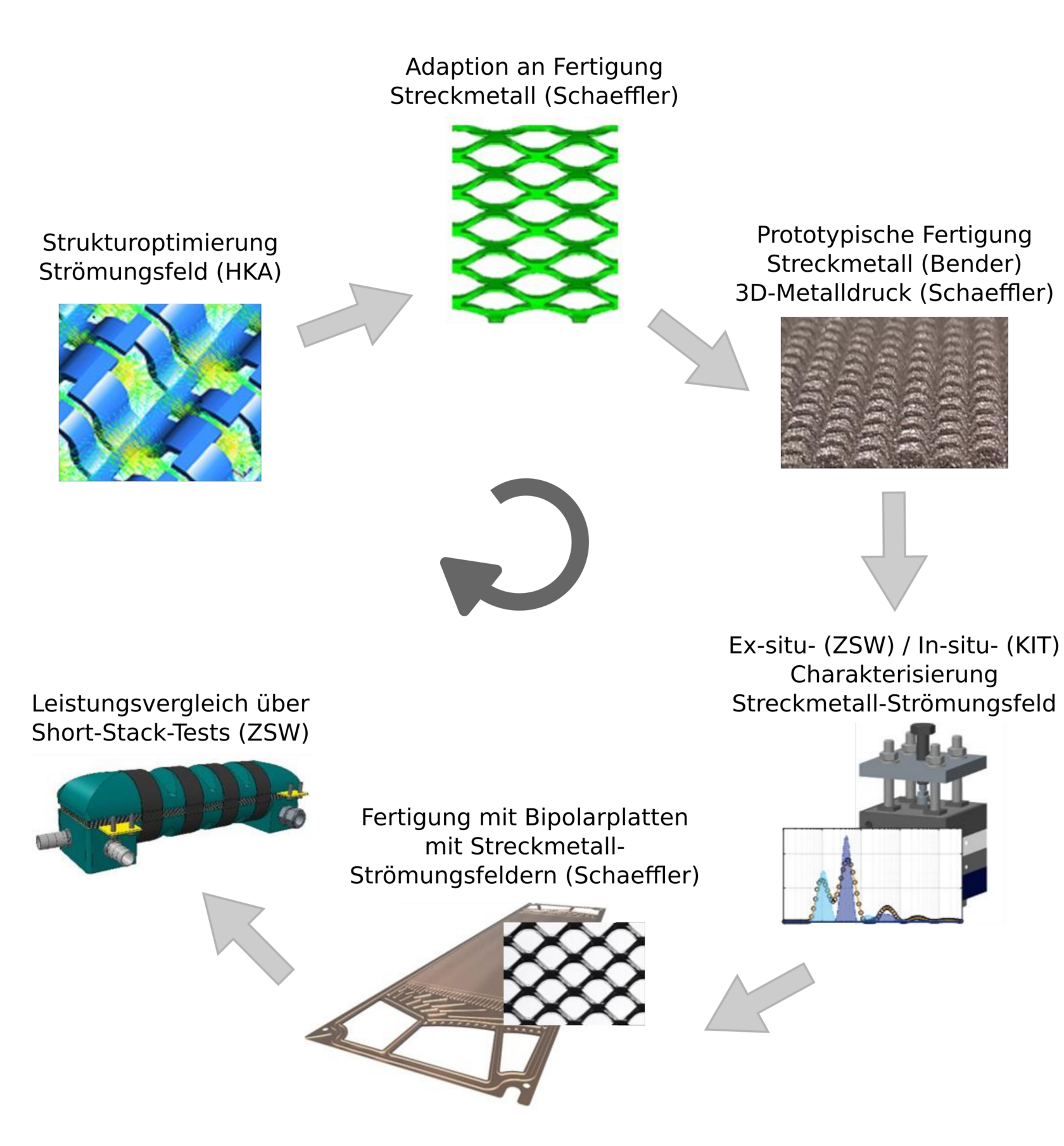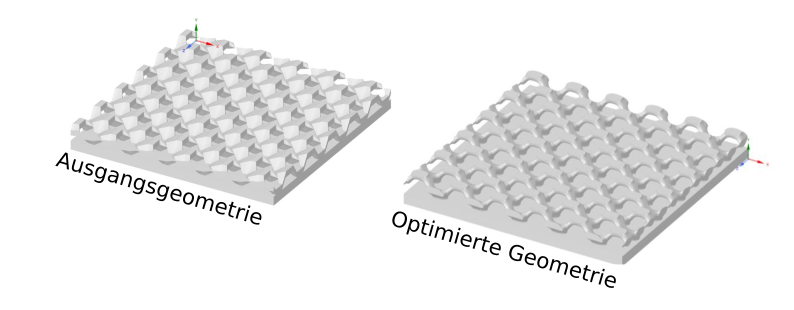ProStrom: Manufacturing and structure-optimized metal flow field for bipolar plates
Overall objective
The aim of the project is to increase the efficiency and power density of a polymer electrolyte membrane fuel cell (PEMFC) by optimizing the flow structures in the bipolar plates. This is to be achieved by developing a new approach and applying an adapted manufacturing process, so as to enable a cost-efficient mass production process. High stack power densities are particularly important for mobile applications, but require three-dimensional flow structures, which have been difficult to manufacture to date. The project aims to optimize these three-dimensional flow structures and develop them for mass production, using expanded metal manufacturing as a suitable manufacturing process. A special optimization procedure will be used to generate improved flow structures, taking into account performance-determining variables such as gas concentration. The optimized flow structures are simulated, manufactured, tested negative experimentally and evaluated, with the results being incorporated into the optimization process. The generated structures are then transmitted to an application-oriented bipolar plate platform, in order to develop specific manufacturing processes and produce and test stacks with optimized bipolar plate modules. This allows both the power density of the stack and the manufacturing process to be evaluated.
Our tasks at the HKA
-
In order to generate and optimize flow structures, application-related and production-related boundary conditions are identified and defined. These include geometric boundary conditions such as length, width, height and contact surfaces based on application-specific requirements as well as manufacturing engineering boundary conditions for material selection, material thickness, radii and process control for expanded metal and 3D metal printing. This data is incorporated into a phase field model that is configured for the simulative description of the topology optimization of the gas-flowed structures. Target parameters such as power density and O2 concentration are defined and integrated into the optimization simulation.
-
Simulation studies for topology optimization are based on the phase field method for describing the Dynamics of free surfaces. The simulation model is extended on the basis of geometry, material and process parameters and the numerical solver is adapted. Validation calculations for O2 concentration diffusion and pressure loss are carried out and compared with real example systems. The parameter space for further studies is defined, whereby boundary conditions such as geometry, inflow velocity and solids volume are varied. Model extensions for high-performance computer systems are prepared for efficient implementation. Simulations of topology optimization are carried out, taking into account gas diffusion and condensation of water on cooling fields. Geometric and Manufacturing Engineering data are evaluated and visualized from the simulation results in order to optimally design the fuel cell.


